On the Road is a weekday feature spotlighting reader photo submissions.
From the exotic to the familiar, whether you’re traveling or in your own backyard, we would love to see the world through your eyes.
JanieM
To recap: I visited my son Jamie for several weeks in February 2010. He was teaching in Yulin, Shaanxi province, which is about 500 miles west/southwest of Beijing and not far from Inner Mongolia. It’s situated on the Loess Plateau, with a dry, dusty feel to the land and often the air. Dust storms can blow up, and though it isn’t actually a desert, it’s not the least bit lush, either.
One of the “sights” associated with Yulin is a fortress called Zhenbeitai, along with a nearby remnant of the Great Wall. Another is a “pagoda” in the hills outside the city. Both are subjects of this set of pictures, and good illustrations of the landscape.
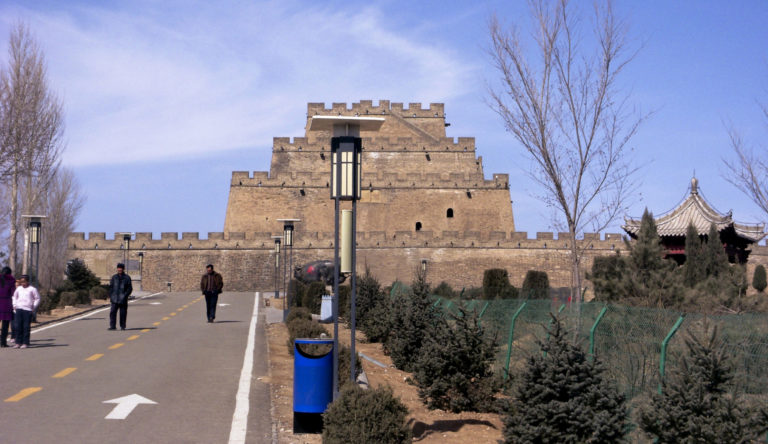
Located on a hilltop at the edge of the city, Zhenbeitai is a fortress and watchtower along the route of the Great Wall.
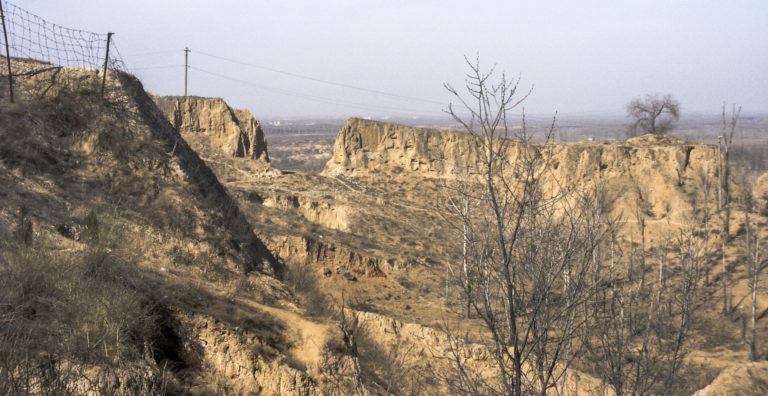
In Set 3 I mentioned someone saying that the Wall at Mutianyu, where we saw it, was an “artist’s rendering.”
This picture of an unrestored remnant visible from Zhenbeitai shows where that comment came from.
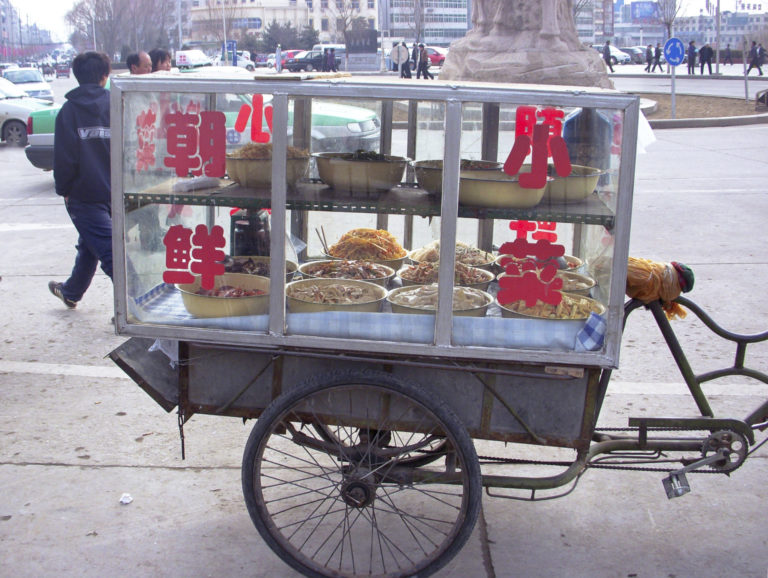
Street food.
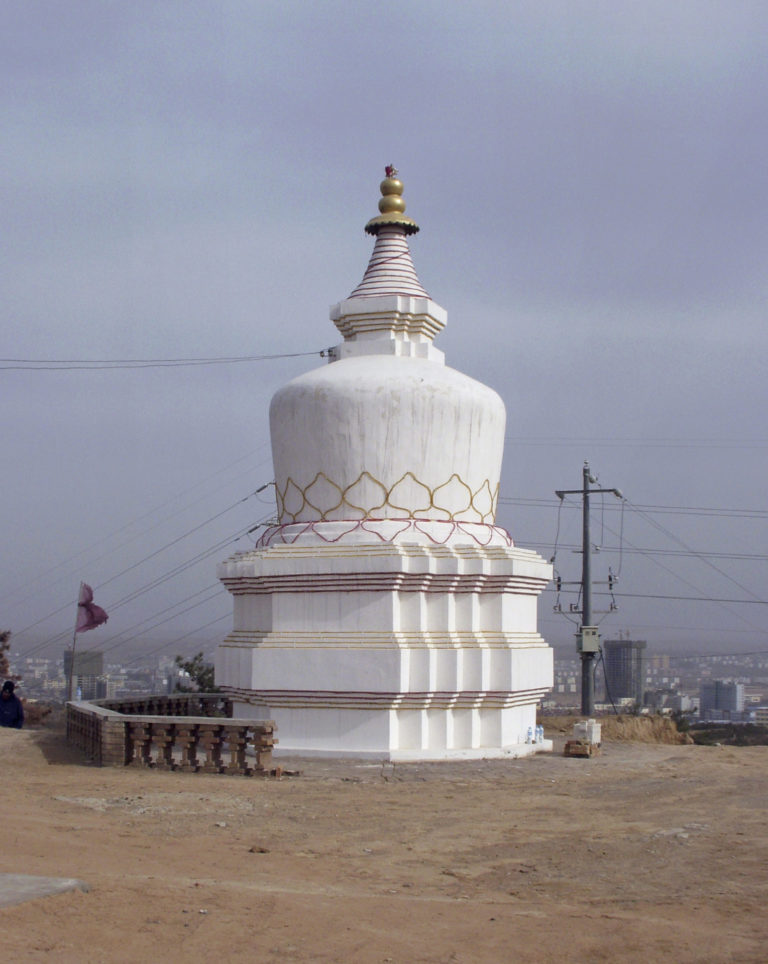
Like Zhenbeitai, this is one of the “attractions” of Yulin, but I was never able to get a clear answer about what it was for, or what sort of worship or belief system it was attached to.
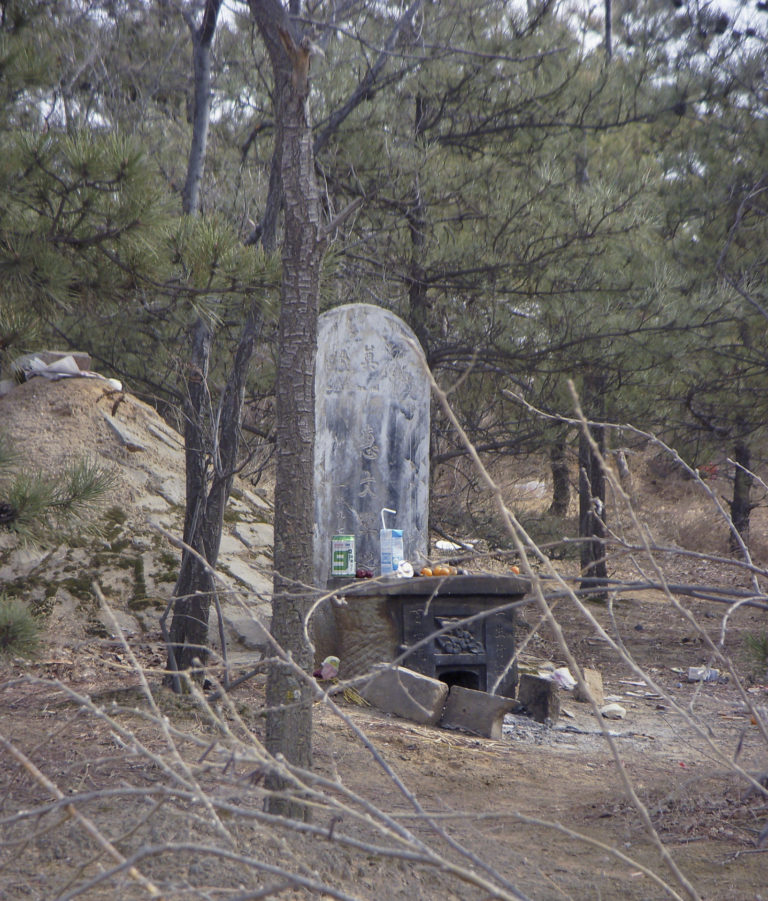
We walked a couple of miles to get to the pagoda, through a range of neighborhoods and then out of the city. There were graves scattered seemingly randomly through the dusty, scrubby hillsides, unlike any graveyard I’ve ever seen in the US. I was told that there are ways of calculating where someone should be buried, and that would have determined the apparently random placements. Several graves had offerings – this one with an interesting mix of items, and a little fire pit at its base.
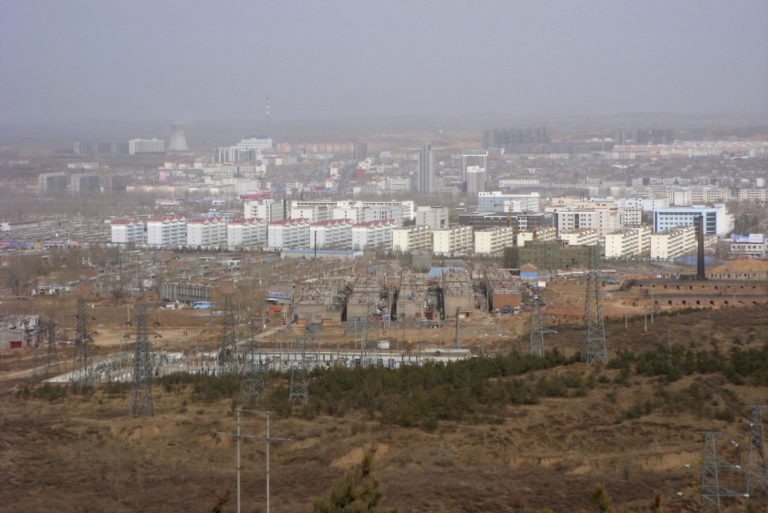
This is a shot of the campus where Jamie taught. His apartment was in the fifth yellow-ish building from the right, in the nearest row: my home away from home for a month.
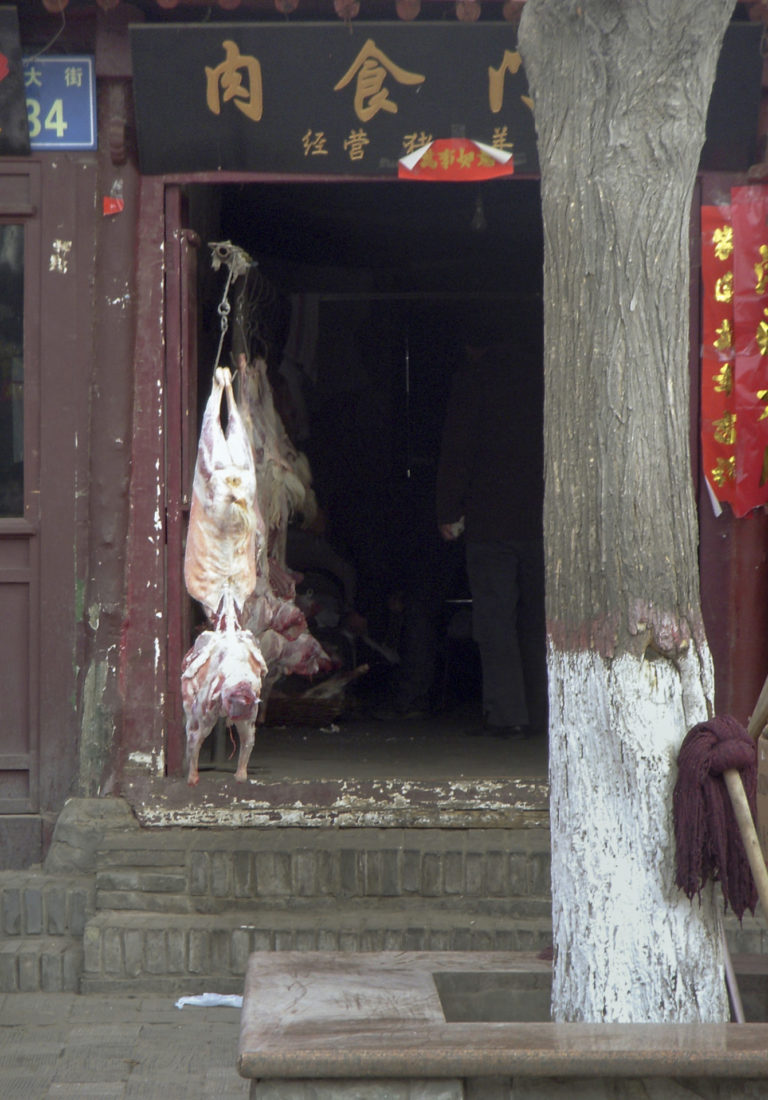
Matter-of-factly, meat.
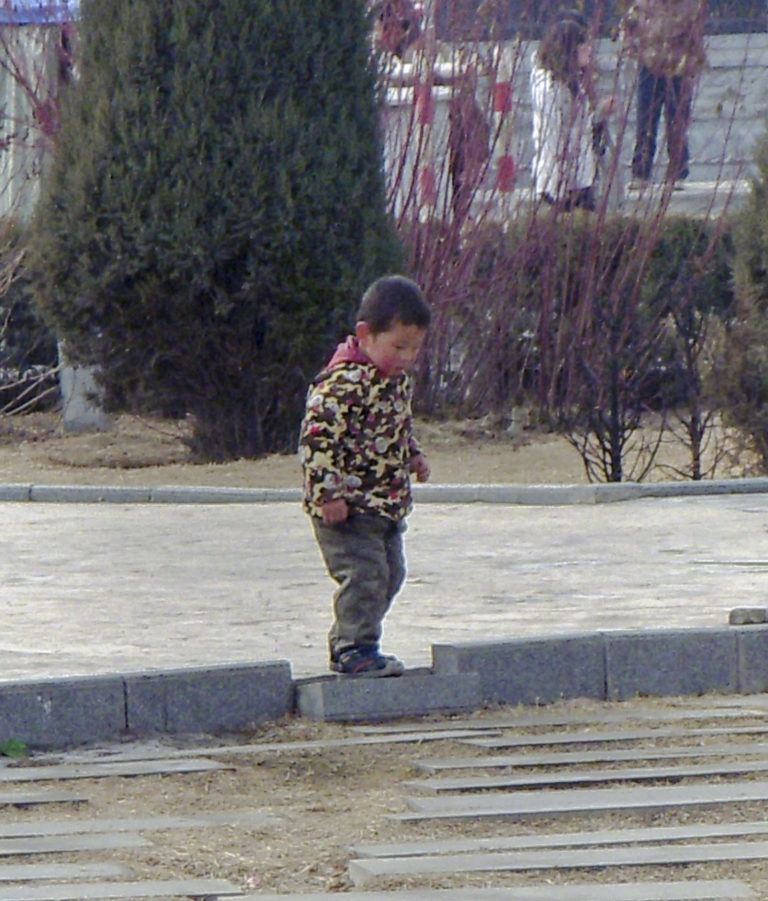
Stepping carefully….

Van Buren
Thank you for sharing. Made me think about what my life would be like had I been born in Yulin instead of Southern California. Not as pleasant, I would guess.
MelissaM
It’s not picturesque, that’s for sure. The campus overview looks harsh, with the haze and the electrical (?) towers in the front, nuke cooling tower in the back, uniform buildings.
YY_Sima Qian
The white stupa is associated with Tibetan Buddhism, which was (& is) dominant among Mongols. Yulin, being on the Ming Dynasty Great Wall, sits at the frontier w/ the Mongolian territory. Such stupas typically hold remains of monks & nuns.
The systems for sitting graves (& dwellings, palaces, interior decoration) is Fengshui.
The Zhenbeitai is a major fortification on the Ming Dynasty Great Wall, site for a significant garrison & logistics base, from which Ming forces can range into Mongol territory on punitive expeditions.
JanieM
@YY_Sima Qian: Thanks as usual for the background information. That the siting system is feng shui fits with what local people told me, but they didn’t use that label, which I would have recognized. They were all academics…maybe that shaped how they wanted to frame the info.
@Van Buren:
@MelissaM:
Yes, it’s harsh, and not an easy life for a lot of people, I’m sure. A lot of my son’s students were from “the countryside” — meaning rural areas, and were the first from their families to go to college.
For me, given where I’ve lived, the lack of greenery would be tough. Then again, I was there in February and March, so I didn’t get to see what the place looked like in spring and summer.
SkyBluePink
Fascinating photos!
dnfree
This is an area off the beaten path of most China tours, so it’s great to see. The Great Wall is fascinating. Puts the wall we saw near Beijing in perspective. And again you include a photo of a child that really draws the viewer in to what the child is thinking.
Chinese people asked us on our tour when we were coming back again, and it was sad to say that we wouldn’t be. So far and so expensive—but I’m glad to see more through your eyes.
JanieM
@dnfree: Thanks. I was incredibly lucky to have had the chance to make that trip, made possibly mostly by my son’s hospitality and companionship. Like you, I can’t imagine ever getting back there, between age and budget and changes in the world.
J R in WV
@MelissaM:
The cooling tower is almost certainly for a coal-fired power plant. There are dozens of them around the Ohio river, and quite a few construction guys lost their lives when building a cooling tower at Willow Grove.
They (the construction company) moved the working stages up a lift before the previous lift of concrete had time to set up to the required strength to support the work stages. Was a tragedy Wife covered back in the day. Completely avoidable death.
OSHA probably fined the associated companies a vast amount, like $$75,000 total penalty. Lunch money for the CEO and his minions.
Anyway, nuke plants are pretty scarce in China, and wouldn’t be quite so close to the University.
All power plants (whether gas, coal, nuke, oil, etc) need cooling capability, some just run the river water through and dump the hot water back into the river — not a good thing environmentally, but cheaper than building a tower to pass the waste heat into the air.
Richard
Thank you. I wonder what it looks like in summer? The pictures remind me of Nevada. It looks very harsh. It looks like it is lacking the people who understood that place better.
Doug
The grave scene and the city panorama remind me a good bit of Tbilisi, where I lived for 3.5 years (starting two weeks before the Russian invasion). Semi-arid climate, pines on the hillside at the grave could have been straight from Tbilisi’s ethnographic museum, and the rows of Communist apartment buildings seen from afar — all those looked familiar from my time at the other end of Asia’s steppelands.
YY_Sima Qian
@JanieM:
@Richard:
Yulin is supposed to be quite green in summer. It has the reputation of being a lush spot on the otherwise yellow and brown Loess Plateau. Of course, the reputation might date back centuries, from a time when the climate was different.